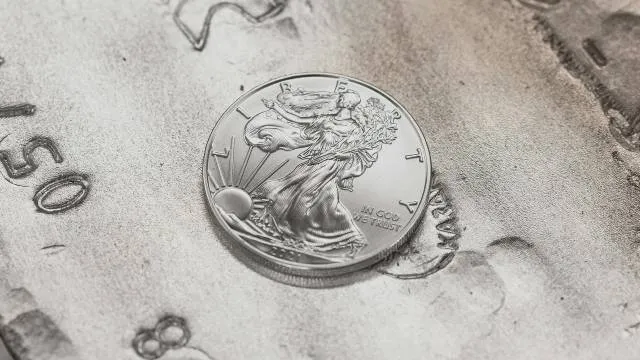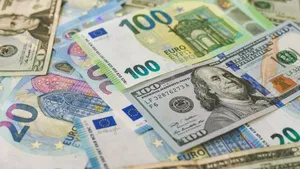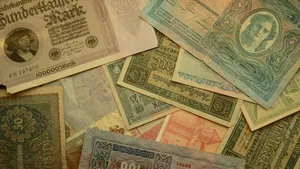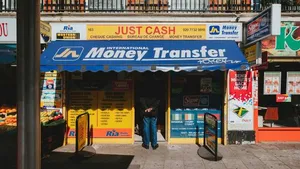Metal-Backed Digital Currencies
Metals as Money: Beyond Gold Bugs and Preppers
The idea of returning to metal-backed currencies often gets dismissed as the fever dream of survivalists stockpiling gold coins for the apocalypse. But strip away the political rhetoric and examine the science behind what makes good money, and you’ll find that metals offer compelling advantages that modern technology might finally make practical to implement. However, any serious consideration of metal-backed digital currencies must first solve for a number of complex economic trade-offs, technological challenges, and environmental considerations that go far beyond simple nostalgia for the gold standard.
The Science of Monetary Metals
When we think about what makes an ideal currency material, we’re essentially looking for a substance that can fulfill money’s three core functions: serving as a medium of exchange, storing value over time, and providing a stable unit of account. From a purely scientific perspective, most of the periodic table fails this test rather spectacularly.
Gases are obviously impractical — imagine trying to pay for groceries with a jar of helium that keeps escaping every time you open it. Liquids aren’t much better unless you enjoy carrying around vials of mercury (which would also poison you). That leaves us with solids, and specifically metals, since they can be shaped into durable, recognizable forms.¹
But even among metals, the requirements are surprisingly strict. Iron rusts, copper oxidizes, and most metals either tarnish too easily or are too reactive. This process of elimination leads us to what economists call the “noble metals”—primarily gold, silver, platinum, and palladium—which resist corrosion and maintain their properties over time.
Historically, platinum was eliminated as a monetary metal because its melting point of 3,215°F was too high for ancient furnaces to work with, making it impossible to mint into coins.¹ Palladium and rhodium weren’t even discovered until the 19th century, leaving gold and silver as the only viable options for most of human history.¹
The key insight here is that gold emerged as the premier monetary metal not through arbitrary cultural preference, but because it hits the sweet spot of being “abundant enough to create coins but rare enough so that not everyone can produce them.”⁸ It doesn’t corrode, provides stable storage of value, and has physical properties that inspire confidence.⁸
Economic Theory and the Triffin Dilemma
Understanding why modern economies moved away from metal standards requires grappling with fundamental tensions in international monetary systems. The Triffin Dilemma, identified by economist Robert Triffin in 1960, illuminates a core problem with any reserve currency system—including potential metal-backed ones.³¹
The dilemma arises because “a country whose currency is the global reserve currency, held by other nations as foreign exchange (FX) reserves to support international trade, must somehow supply the world with its currency.”³¹ This creates an inherent contradiction: to provide sufficient global liquidity, the reserve currency issuer must run persistent trade deficits, but these deficits eventually undermine confidence in the currency itself.
For metal-backed systems, this presents unique challenges. If a country backs its currency with gold and needs to provide international liquidity, it must either: (1) increase its gold reserves at the same rate as global trade growth, which may be impossible given limited gold supply, or (2) reduce the gold backing ratio, which defeats the purpose of the metal backing.
Triffin correctly predicted that the Bretton Woods system would collapse because “the US was facing an insurmountable dilemma between satisfying the increasing demand for safe dollar assets and maintaining their safety.”³² By 1959, “the number of U.S. dollars in circulation exceeded the amount of gold that was backing them.”³¹ The system collapsed in 1971 when President Nixon ended dollar-gold convertibility.
A modern metal-backed digital currency would face similar pressures. As global trade expands, either the backing metal becomes increasingly scarce (causing deflation), or the system requires expanding credit beyond metal reserves (undermining the backing). This fundamental tension has no easy solutions.
Why Metal Baskets Beat Single-Metal Systems
While individual metals face supply constraints, historical evidence suggests that baskets of metals can provide superior monetary stability. The 19th-century experience with bimetallism offers crucial insights.
In the 19th century, France operated what economists call a “bimetallic system,” accepting both gold and silver at fixed ratios. This system actually stabilized global metal prices for decades. France essentially acted as a “global monetary stabilizer” through Gresham’s law—when one metal became more abundant (and thus cheaper), people would bring it to French mints to exchange for coins, while the scarcer metal would be hoarded. This automatic balancing mechanism helped absorb supply shocks from new discoveries or changes in mining output.⁸
The historical evidence shows that “bimetallism was better at stabilizing prices than a regime based on only one currency metal, as supply shocks to gold and silver partially offset one another.”⁸ When silver discoveries flooded the market, gold remained stable. When gold strikes created abundance, silver provided the stability.
Modern analysis of bimetallic systems reveals several advantages: they provide “stability and flexibility in the monetary system” and can “promote international trade” since a country using multiple metals can trade with nations using any metallic standard.¹⁰ Perhaps most importantly, a shortage of one metal can be offset by increased availability of another, reducing the risk of both inflation and deflation.¹⁰
Today’s technology allows us to expand this concept beyond just gold and silver. Modern precious metal baskets can include “gold, silver, platinum and palladium”¹² in carefully calculated proportions that reflect both their monetary properties and industrial demand. This diversification helps smooth out the volatility that any single metal might experience due to industrial demand shifts or supply disruptions.
However, managing metal baskets introduces complexity. Different metals have different supply characteristics, industrial uses, and price volatilities. Silver, for instance, faces growing industrial demand because “it’s the most conductive metal—vital for electronics. Solar panels heavily rely on silver paste. Electric vehicles use more silver than traditional cars.”¹⁷ A well-designed basket must account for these varying demand patterns while maintaining stable purchasing power.
The Gold Standard and Deflationary Pressures: Lessons from History
Critics of metal-backed currencies point to the deflationary pressures and economic rigidity associated with historical gold standards. The evidence for these concerns is substantial and well-documented.
During the Great Depression, the gold standard played a demonstrably harmful role. Research shows that “the gold standard contributed to the severity and length of the Great Depression, as under the gold standard central banks could not expand credit at a fast enough rate to offset deflationary forces.”¹¹ Countries that abandoned the gold standard earlier “suffered less from deflation and tended to recover more quickly.”¹¹
The mechanism was straightforward but destructive. Under the gold standard, “maintaining the international gold standard, in essence, required a massive monetary contraction throughout the world to match the one occurring in the United States.”⁴⁵ When the U.S. economy contracted, gold flowed toward America, forcing other countries to raise interest rates to prevent gold outflows. This transmitted deflation globally.
The Federal Reserve found itself constrained by gold standard requirements. In the U.S., “the central bank was required by the Federal Reserve Act (1913) to have gold backing 40% of its demand notes.”¹¹ This prevented expansionary monetary policy when it was most needed. As one analysis noted, “adherence to the gold standard prevented the Federal Reserve from expanding the money supply to stimulate the economy, fund insolvent banks and fund government deficits.”¹¹
These deflationary pressures weren’t accidental features—they were inherent to the system. Under a gold standard, “if central banks increased their gold reserve ratios, i.e. putting more gold in their vaults for every unit of currency issued, they reduced the volume of gold in circulation.”⁴¹ Since gold prices were fixed, this could only result in general price deflation.
Modern metal-backed systems would need mechanisms to address these deflationary biases. Possible solutions include:
- Flexible backing ratios: Allow the metal backing percentage to vary counter-cyclically
- Automatic stabilizers: Build in mechanisms to inject liquidity during downturns without abandoning metal backing
- International coordination: Establish agreements to prevent beggar-thy-neighbor policies that characterized the 1930s
However, each of these solutions involves trade-offs that may undermine the fundamental benefits proponents seek from metal backing.
Digital Technology Enables Metal-Backed Systems
The biggest historical limitation of metal-backed currencies wasn’t the metals themselves—it was the logistics. Moving, storing, and verifying physical metals for everyday transactions was cumbersome and expensive. But blockchain technology and digital systems have changed this equation entirely.
Modern gold-backed cryptocurrencies like Tether Gold, Paxos Gold, and DigixGlobal demonstrate how “blockchain technology” can provide “global access” to metal-backed currencies with “features like redemption, fractional gold ownership” and instant transactions.¹³ These systems allow users to “buy, trade, send, and earn physical gold anywhere in the world” with “transaction speeds” that are “lightning quick, being confirmed within 3 seconds.”¹³
The key innovation is tokenization—representing physical metal reserves as digital tokens on a blockchain. Tokenization “allows physical metals to be represented as digital tokens on a blockchain. These tokens are backed by actual reserves and can be traded 24/7 globally.”¹⁷ This eliminates the storage and transportation costs that historically made metal-backed currencies impractical for daily use.
Multiple successful implementations now exist where “one Gold token is equivalent to one ounce of gold” with “ownership of the underlying bullion recorded on the blockchain, with legal title remaining with the holder at all times.”¹³ The physical gold sits in audited vaults while the digital tokens circulate freely, combining the stability of metal backing with the convenience of digital transactions.
Smart Contract Mechanisms
Advanced implementations use smart contracts to automate key functions:
- Automatic rebalancing: Smart contracts can automatically adjust basket compositions based on predefined algorithms
- Yield distribution: Contracts can distribute yields from metal leasing or storage optimization
- Redemption triggers: Automated redemption processes when certain conditions are met
- Audit verification: Integration with real-time audit systems to verify backing
Cross-Border Settlement
Digital metal-backed currencies could revolutionize international trade by providing a neutral settlement medium that doesn’t depend on any single nation’s monetary policy. Unlike current systems where trade often requires conversion through dollar-denominated correspondent banking, metal-backed digital currencies could enable direct settlement between trading partners.
Interoperability Challenges
However, technical implementation faces significant challenges. Different blockchain networks have varying security models, transaction costs, and environmental footprints. Creating truly interoperable metal-backed digital currencies requires solving complex technical problems around:
- Cross-chain communication: Enabling seamless transfers between different blockchain networks
- Atomic swaps: Ensuring simultaneous exchange of different tokenized metals without counterparty risk
- Oracle reliability: Accurately pricing baskets of metals across global markets
- Governance mechanisms: Coordinating updates and changes across decentralized networks
Critical Problems with Current Blockchain-Based Metal Tokens
While the technology exists to create sophisticated metal-backed digital currencies, current implementations suffer from fundamental flaws that any serious monetary system must address.
The Redemption Problem
The most critical flaw in existing gold-backed tokens is the lack of enforceable redemption rights for international users. Most current systems promise that tokens can be redeemed for physical metal, but the reality is far more complex.
“Many DGC providers do not disclose the amount of bullion stored, or do not allow independent external bullion audits, raising concerns that such companies do not maintain a 100% reserve ratio.”¹⁴ Even when audits exist, they typically verify only that metal exists somewhere, not that token holders have legally enforceable claims to specific metal.
For international users, the redemption problem becomes acute. If a gold-backed token is issued by a company in the Cayman Islands, backed by gold stored in Switzerland, and purchased by a user in Japan, what legal recourse does the user have if redemption is denied? Cross-border enforcement of digital asset claims remains largely untested in international courts.
The regulatory framework compounds these problems. Past attempts at digital gold currencies like E-Gold “fell victim to its founders’ unfamiliarity with the risks of online fraud and the response it would provoke from the U.S. regulatory system.”¹⁵ E-Gold’s operators were ultimately charged with money laundering and operating an unlicensed money transmitting business, leading to the system’s collapse.⁵⁸
Jurisdictional Arbitrage and Regulatory Gaps
Current metal-backed tokens often exploit regulatory arbitrage by incorporating in offshore jurisdictions with minimal oversight. As law enforcement noted, “many components of the digital currency system are incorporated in offshore and foreign jurisdictions not subject to U.S. regulations; however, their services are accessed in the United States through the Internet.”⁵⁰
This creates what regulators call a “lack of transparency, poor oversight, slack security practices, or outright theft” that threatens digital holdings.¹⁵ The global nature of digital currencies means that “any investigation involving substantial use of virtual currency is likely to rely on international cooperation. However, the speed of the legal process cannot keep up with the pace of these transactions.”⁵⁶
Market Manipulation and Price Discovery
Metal-backed tokens face unique vulnerabilities to market manipulation. Unlike commodity-backed stablecoins tied to fiat currencies, metal-backed tokens must track volatile commodity prices. This creates opportunities for sophisticated actors to manipulate either the underlying metal markets or the token markets to extract value from users.
The problem is exacerbated by thin markets for many precious metals. Platinum and palladium markets, in particular, are relatively small and can be moved by large orders. If tokens tracking these metals become popular, they could actually destabilize the underlying commodity markets they’re supposed to track.
Custody and Counterparty Risk
Even well-intentioned metal-backed token systems concentrate enormous counterparty risk in custody arrangements. Physical metals must be stored somewhere, and users must trust custodians not to pledge the same metal multiple times, lose it to theft, or simply disappear with it.
The scale of potential losses is enormous. If a major gold-backed token issuer fails, it could affect thousands of users across dozens of countries, with no clear mechanism for recovery. Unlike bank deposits, which are often protected by deposit insurance, metal-backed token users typically have no such protection.
Environmental and Social Considerations
Any comprehensive analysis of metal-backed currencies must confront their environmental implications, both from physical metal extraction and digital infrastructure requirements.
Precious Metals Mining Impact
The environmental cost of precious metals extraction is staggering. “Producing a single gold wedding ring generates 20 tons of waste.”⁶² This waste “often contains toxic chemicals like mercury, cyanide, and heavy metals, which can contaminate drinking water and harm workers and ecosystems.”⁶²
The scale of environmental damage is enormous. “The mining industry routinely dumps an estimated 180 million tonnes of toxic mine waste into rivers, lakes, streams, and oceans annually.”⁶² Gold mining alone “is responsible for 90% of deforestation in the Amazon’s Guiana Shield region.”⁶²
For a global monetary system, even small increases in demand for monetary metals could trigger significant environmental damage. If metal-backed digital currencies became widely adopted, the additional demand for backing metals could accelerate mining in environmentally sensitive areas.
Silver presents particular challenges because of its dual role as both a monetary and industrial metal. As the clean energy transition accelerates, silver demand from solar panels and electric vehicles is expected to surge, potentially creating supply constraints that could destabilize a silver-backed monetary system.
Blockchain Energy Consumption
The digital infrastructure supporting metal-backed currencies also carries significant environmental costs. Bitcoin mining alone “consumed 173.42 Terawatt hours of electricity” during 2020-2021, ranking it “27th in the world, ahead of a country like Pakistan, with a population of over 230 million people.”⁶⁰
The environmental impact varies dramatically by consensus mechanism. Proof-of-work systems like Bitcoin have enormous energy requirements, while proof-of-stake systems like modern Ethereum use “99% less energy than traditional mining.”⁶⁷ However, proof-of-stake systems raise their own concerns about centralization and security.
For metal-backed digital currencies, the choice of blockchain infrastructure becomes crucial. A system that requires enormous energy consumption for basic transactions could have total environmental costs (mining plus blockchain) that exceed traditional monetary systems.
Circular Economy Solutions
The most promising approach to addressing environmental concerns involves embracing circular economy principles. “Recycling precious metals from electronic waste (e-waste) and other sources is a more energy-efficient and environmentally-friendly process compared to mining new materials.”⁶²
Recycled gold requires only about 10% of the energy needed to mine new gold, and recycled metals maintain their properties indefinitely. A well-designed metal-backed currency system could incentivize recycling by accepting recycled metals as backing and creating transparent supply chain tracking.
Advanced blockchain systems could track the provenance of backing metals, ensuring that environmentally responsible sources are prioritized and that recycled content is properly valued.
Global Economic Implications and Multipolar Scenarios
The adoption of metal-backed digital currencies by major economies would fundamentally reshape the international monetary system, with implications extending far beyond the currencies themselves.
Reserve Currency Dynamics
Currently, the U.S. dollar’s reserve currency status provides what French finance minister Valery Giscard d’Estaing called “exorbitant privilege”⁴⁰—the ability to issue debt in its own currency and import more than it exports indefinitely. Metal-backed currencies could challenge this arrangement.
If major economies adopted metal-backed digital currencies for international trade, it could reduce demand for dollar reserves. This might initially seem beneficial for the U.S., reducing the burden of providing global liquidity. However, it would also eliminate the advantages of reserve currency status, potentially raising U.S. borrowing costs and reducing American influence over global economic policy.
The transition could be particularly disruptive if it happens rapidly. A sudden shift away from dollar reserves could trigger what researchers call a “new Triffin dilemma”—a confidence crisis leading to a run on the dollar.³⁸ Such an event could cause massive global financial instability.
Developing Nation Impacts
Metal-backed digital currencies could have profound implications for developing nations. On one hand, they could provide monetary stability for countries with weak institutions or histories of monetary mismanagement. A country could potentially adopt a basket-backed digital currency as legal tender without needing to maintain its own central bank or build monetary policy credibility.
However, the transition could also create new dependencies. Countries that adopt metal-backed currencies would need reliable access to international digital infrastructure and could find themselves vulnerable to changes in metal prices driven by factors completely outside their control.
Small economies might also struggle with the deflationary bias inherent in metal-backed systems. During economic downturns, when expansion of the money supply might be beneficial, metal backing could prevent appropriate monetary responses.
Trade Settlement Revolution
Perhaps the most significant impact could be on international trade settlement. Currently, most global trade involves multiple currency conversions and expensive correspondent banking relationships. Metal-backed digital currencies could enable direct settlement between trading partners without requiring dollar intermediation.
This could particularly benefit trade relationships between countries that are both wary of dollar dependence—for example, trade between China and Russia, or between African nations and Middle Eastern oil producers. Over time, this could lead to the development of alternative financial networks that bypass traditional Western financial infrastructure.
Alternative Perspectives: The Economist Critique
Mainstream economists have raised several fundamental objections to metal-backed currencies that any serious analysis must address.
Monetary Policy Flexibility
The strongest critique centers on monetary policy effectiveness. Modern central banks use interest rate adjustments and quantitative easing to respond to economic shocks. Under a metal-backed system, these tools would be severely constrained or entirely unavailable.
During the 2008 financial crisis, the Federal Reserve’s ability to expand the monetary base prevented a deflationary spiral similar to the Great Depression. Under a gold standard, such intervention would be impossible without abandoning the metal backing—exactly what happened during the Great Depression when countries were forced to choose between monetary expansion and metal convertibility.
Proponents of metal-backed currencies argue that the need for such interventions is created by fiat monetary systems in the first place. However, this argument is difficult to sustain given the evidence that economic shocks—from natural disasters to technological disruptions—would occur regardless of the monetary system.
The Productivity Problem
Economic growth depends on productivity improvements that increase the output of goods and services. Under a metal-backed system, the money supply’s growth is constrained by the availability of backing metals. If productivity growth outpaces the growth of metal supplies, the result is deflation—falling prices across the economy.
While moderate deflation might seem beneficial to consumers, it creates powerful incentives to delay purchases and investments. Why buy today if the same product will be cheaper tomorrow? This deflationary psychology can create downward spirals where reduced demand leads to further price cuts, reduced production, and increased unemployment.
The problem is particularly acute for investment and innovation. Long-term projects become less attractive when future revenues will be in deflated currency, potentially stifling the technological progress that drives economic growth.
Financial System Stability
Modern financial systems depend on the central bank’s role as lender of last resort. During banking panics, central banks can provide emergency liquidity to prevent system-wide collapse. Under a metal-backed system, this function would be severely constrained.
The 19th century was marked by frequent banking panics precisely because central banks lacked the flexibility to provide emergency liquidity. The establishment of the Federal Reserve in 1913 was specifically designed to address this problem. A return to metal backing could resurrect these instabilities.
Practical Implementation for a Universal Financial Platform
Given these challenges and opportunities, how might a startup building a universal financial platform implement a purchasing-power-stable digital currency backed by a basket of metals?
Addressing the Redemption Problem
The most critical issue is creating legally enforceable redemption rights across international boundaries. This requires:
Multi-jurisdictional legal structure: Rather than relying on a single jurisdiction, the system should establish legal entities in multiple major jurisdictions with clear allocation of responsibilities and mutual legal obligations.
Standardized custody agreements: All metal storage should be governed by internationally recognized custody standards with independent auditing and insurance requirements.
Arbitration mechanisms: Disputes should be resolved through international arbitration rather than local courts, reducing jurisdictional risks for users.
Transparent allocation: Each token should be tied to specific, identifiable metal holdings with clear legal title chains.
Purchasing Power Stability Mechanisms
Simply backing a currency with metals doesn’t guarantee purchasing power stability—metal prices fluctuate significantly. A truly stable currency requires active management:
Dynamic basket composition: The metal composition should adjust based on market conditions, economic indicators, and supply constraints. For example, if silver prices become extremely volatile due to industrial demand, the basket could temporarily reduce silver weighting.
Economic indicator integration: The system could incorporate broader economic indicators—like commodity price indices or inflation measures—to guide basket adjustments and maintain purchasing power stability.
Yield generation: Rather than holding static metal reserves, the system could engage in responsible metal leasing to commercial users, generating returns that could be used to maintain stability during adverse market conditions.
Counter-cyclical reserves: Maintain buffer reserves that can be deployed during extreme market conditions to maintain stability without abandoning metal backing.
Technological Architecture
The platform should use advanced blockchain technology while avoiding the environmental costs of proof-of-work systems:
Proof-of-stake consensus: Use energy-efficient consensus mechanisms that reduce environmental impact while maintaining security.
Layer-2 scaling: Implement second-layer solutions for high-frequency transactions while settling net positions on the main chain.
Oracle networks: Use decentralized oracle networks to provide reliable, manipulation-resistant price feeds for basket management.
Cross-chain compatibility: Ensure the currency can operate across multiple blockchain networks to avoid vendor lock-in and maximize accessibility.
Regulatory Compliance
Unlike many current metal-backed tokens, a serious monetary platform must operate within established regulatory frameworks:
Money transmitter licenses: Obtain appropriate licenses in all major operating jurisdictions, even if costly and time-consuming.
AML/KYC compliance: Implement robust anti-money laundering and know-your-customer procedures that satisfy regulators while protecting user privacy.
Regulatory engagement: Work proactively with regulators to establish clear operational parameters rather than operating in legal gray areas.
Transparent operations: Publish regular audits, reserve reports, and operational metrics to build trust with users and regulators.
Environmental Responsibility
Address environmental concerns through design choices:
Recycled metal preference: Prioritize recycled metals over newly mined materials for backing reserves, potentially paying premium prices to incentivize responsible sourcing.
Carbon offset integration: Offset the environmental costs of both metal extraction and blockchain operations through verified carbon credit programs.
Sustainable mining partnerships: When new metals are required, partner with mining operations that meet strict environmental and social standards.
Circular economy incentives: Create mechanisms that reward users for contributing recycled precious metals to the backing reserves.
The Path Forward: Integration vs. Replacement
The evidence suggests that metal-backed digital currencies are neither the universal solution proponents claim nor the anachronistic folly critics suggest. Instead, they represent a potentially valuable tool for specific use cases within a broader, diversified monetary ecosystem.
Rather than replacing existing monetary systems, metal-backed digital currencies could serve as:
International trade settlement: Providing a neutral medium for countries seeking to reduce dependence on any single national currency.
Store of value for institutions: Offering central banks and sovereign wealth funds an alternative to traditional reserve assets.
Inflation hedge for individuals: Giving savers in high-inflation environments access to stable purchasing power.
Financial inclusion tool: Providing monetary stability for populations in countries with weak monetary institutions.
The key insight is that different monetary tools serve different purposes. Just as modern portfolios include stocks, bonds, commodities, and cash for different reasons, the future monetary system might include fiat currencies, cryptocurrencies, central bank digital currencies, and metal-backed digital currencies—each optimized for specific use cases.
The technology now exists to create sophisticated metal-backed digital currencies that could provide the stability of precious metals with the convenience of modern payments. Whether such systems gain adoption will depend on whether their designers can solve the fundamental problems of redemption enforceability, purchasing power stability, regulatory compliance, and environmental responsibility that have plagued previous attempts.
The question isn’t whether we can build better monetary systems using metals and blockchain technology—it’s whether we have the institutional wisdom to implement them in ways that serve human flourishing rather than repeating the mistakes of the past. The stakes are high enough, and the potential benefits significant enough, that serious attempts deserve serious consideration.
References
- GSI Exchange - What Are Monetary Metals
- Monetary Metals - Falling Currencies
- Investopedia - What Is the Gold Standard? History and Collapse
- Wikipedia - Fiat money
- Econlib - Chapter VI. The Metals as Money
- Investopedia - Why Has Gold Always Been Valuable?
- Wikipedia - Monetary system
- IMF - Gold, Silver, and Monetary Stability
- Economics Stack Exchange - Why did money stop being backed by precious metals?
- Economics Online - Bimetallism Explained
- Wikipedia - Coinage metals / Gold standard
- SEC Filing - ETFS Precious Metals Basket Trust
- PrimeXBT - The 10 Best Gold-Backed Cryptocurrencies in 2025
- Wikipedia - Digital gold currency
- Investopedia - Digital Gold Currency (DGC): What It is, How It Works
- Cointelegraph - Stablecoins Backed by Precious Metals — How Do They Work?
- Edge-Forex - What is the Future of Precious Metals in a Digital Economy?
- Wikipedia - Triffin dilemma
- Investopedia - How The Triffin Dilemma Affects Currencies
- CEPR - The new Triffin Dilemma: The concerning fiscal and external trajectories of the US
- Nomura - Trump’s populist policies and the Triffin dilemma
- Deutsche Bundesbank - Monetary policy played a pivotal role in the Great Depression
- Federal Reserve History - The Great Depression
- Britannica - Great Depression - Stock Market Crash, Unemployment, Poverty
- U.S. Department of Justice - Money Laundering in Digital Currencies
- U.S. Department of Justice - Digital Currency Business E-Gold Pleads Guilty
- FBI Law Enforcement Bulletin - Virtual Currency: Investigative Challenges and Opportunities
- United Nations University - UN Study Reveals the Hidden Environmental Impacts of Bitcoin
- BlockApps - Assessing the Environmental Impact of Precious Metals Mining
- GreenMatch - Is Cryptocurrency Mining Bad For The Environment?





